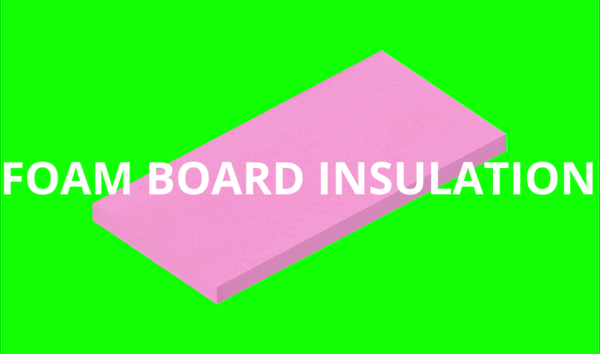PRODUCT SIZE
1250x600x20mm
![]()
GEOLOGICAL PERIOD
Holocene — Carboniferous
Present — 369 MYA
COMPOSITION
100% expanded polystyrene (XPS) granulate
1250x600x20mm

GEOLOGICAL PERIOD
Holocene — Carboniferous
Present — 369 MYA
COMPOSITION
100% expanded polystyrene (XPS) granulate
GEOLOGICAL BIO
The smooth pink surface of foam board insulation belies the geological complexity (and contradiction) of closed-cell petroleum-based foam. Production of extruded polystyrene (XPS) insulation in factories begins with tiny 1mm polystyrene pellets, which are expanded by up to 40 times their original size in a steam chamber that aerates pellets before they are cured, molded, and puffed into blocks.
Set into walls, floors and ceilings, these standardized light, bright, and (almost) airtight panels have high thermal insulation properties and are resistant to moisture. But this also comes at the cost of oil extraction, styrene emissions, and energy-intensive processes. Low building energy use is paradoxically achieved by installing an insulation product with the highest embodied energy on the market.
For other insulation products, see Mineral Wool Insulation and Fiberglass Insulation.
EXTRACTION / MANUFACTURING PROCESS
Feed “raw” polystyrene resin granules into extruder ︎︎︎ Heat at high temperatures until molten ︎︎︎ add additives (such as pink coloring agent) ︎︎︎ add blowing agent ︎︎︎ force plastic mixture through die to extrude it ︎︎︎ cool and expand into desired shape ︎︎︎ trim foam board to final dimensions ︎︎︎ package and ship
The smooth pink surface of foam board insulation belies the geological complexity (and contradiction) of closed-cell petroleum-based foam. Production of extruded polystyrene (XPS) insulation in factories begins with tiny 1mm polystyrene pellets, which are expanded by up to 40 times their original size in a steam chamber that aerates pellets before they are cured, molded, and puffed into blocks.
Set into walls, floors and ceilings, these standardized light, bright, and (almost) airtight panels have high thermal insulation properties and are resistant to moisture. But this also comes at the cost of oil extraction, styrene emissions, and energy-intensive processes. Low building energy use is paradoxically achieved by installing an insulation product with the highest embodied energy on the market.
For other insulation products, see Mineral Wool Insulation and Fiberglass Insulation.
EXTRACTION / MANUFACTURING PROCESS
Feed “raw” polystyrene resin granules into extruder ︎︎︎ Heat at high temperatures until molten ︎︎︎ add additives (such as pink coloring agent) ︎︎︎ add blowing agent ︎︎︎ force plastic mixture through die to extrude it ︎︎︎ cool and expand into desired shape ︎︎︎ trim foam board to final dimensions ︎︎︎ package and ship
